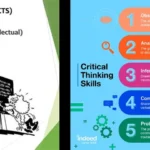What Are Some Real-Life Examples of Adversity? Discover the Different Faces of Hardship and How to Overcome Them:What Are Some Examples Of Adversity In Real Life?
Life is full of ups and downs, and it’s during the downs that we face adversity head-on. Whether it’s a personal setback, a societal challenge, or an economic hardship, adversity can take many forms. From everyday struggles to historical events that have shaped our world, adversity is an ever-present force in our lives.
In this blog post, we will explore the different faces of adversity and delve into real-life examples that showcase the resilience of the human spirit. From overcoming obstacles in our daily routines to navigating through difficult times in history, we will uncover the common thread that binds us all in the face of adversity.
So, buckle up and get ready to be inspired as we dive into the stories of individuals who have triumphed over adversity and learn valuable lessons along the way. Whether you’re seeking motivation, understanding, or simply a reminder that you’re not alone in your struggles, this post is for you.
Join us as we explore the challenges that life throws our way and discover how we can overcome them. From dealing with economic hardships to finding the strength to bounce back from life’s setbacks, we’ll provide insights and practical tips to help you navigate through adversity with resilience and grace.
So, let’s dive in and uncover the hidden gems that lie within the realm of adversity. Together, we’ll learn, grow, and emerge stronger on the other side.
Understanding the Different Faces of Adversity
Adversity is an inescapable part of the human experience, manifesting in various forms and impacting individuals across all walks of life. By understanding the different types of adversity, we can better prepare for and navigate the challenges that we might encounter.
Physical Adversity: Battling Beyond Bodily Limits
Physical adversity often involves the body’s limitations, which can stem from illnesses or injuries. These might be congenital disabilities, sudden accidents, or chronic diseases that drastically alter one’s lifestyle and capabilities. The struggle here is not just the physical pain or disability but also the psychological implications of adapting to new circumstances.
Tip: When facing physical adversity, it’s crucial to focus on what you can control, such as your attitude and how you respond to your circumstances. Seeking support from healthcare professionals and community groups can also provide the necessary tools to manage physical challenges effectively.
Mental Adversity: The Invisible Battle
Mental illnesses or disorders can lead to significant adversity, limiting a person’s abilities or functioning in daily life. Conditions like depression, anxiety, or bipolar disorder require immense strength to manage, often requiring a combination of therapy, medication, and personal coping strategies.
Tip: If you’re dealing with mental adversity, remember that seeking help is a sign of strength. Mental health professionals can offer valuable guidance, and building a support network can provide comfort and understanding.
Emotional Adversity: Navigating the Storm Within
Emotional adversity involves processing and overcoming trauma, loss, or intense emotional experiences. It could be the grief of losing a loved one or the aftermath of surviving an abusive relationship.
Tip: To cope with emotional adversity, it’s important to allow yourself to feel and express your emotions. Therapy, support groups, and creative outlets like writing or art can also serve as powerful tools for healing.
Social Adversity: When Society Poses the Challenge
Social adversity arises from discrimination, social inequalities, or being part of a marginalized group. This type of adversity can affect access to opportunities, quality of life, and self-esteem.
Tip: To tackle social adversity, advocacy and seeking allies can be effective. Engage with community organizations that fight for equality and offer support to those facing similar challenges.
Spiritual Adversity: Quest for Meaning
Spiritual adversity involves questioning beliefs or struggling to find purpose. This can occur during life transitions, after a significant loss, or during a personal crisis.
Tip: When facing spiritual adversity, exploring different philosophies, engaging in meditation, or seeking guidance from spiritual leaders can help in finding direction and peace.
Financial Adversity: The Struggle to Make Ends Meet
Financial difficulties, such as poverty or economic hardship, can lead to substantial stress and affect every aspect of life, from basic needs to long-term goals.
Tip: For those experiencing financial adversity, budgeting, financial education, and seeking assistance programs can provide a pathway to stability.
Adversity in Everyday Contexts
Adversity at Home: When the Personal Sphere is Affected
Home should be a sanctuary, but for many, it’s a source of adversity. Issues like domestic abuse, bullying, or job loss can disrupt the stability and safety of the home environment.
Adversity at Work: Professional Setbacks and Career Challenges
Workplace adversity can include job loss, discrimination, or simply struggling to succeed in a chosen career. This type of adversity can impact one’s identity and self-worth.
Adversity in Education: The Struggle for Learning
School can be a place of growth, but for students with undiagnosed learning disabilities, it can be a source of significant adversity, affecting confidence and mental health.
Historical and Societal Perspectives on Adversity
Adversity Through the Lens of History
Historical events like the Civil War and the internment of Japanese Americans during World War II show us how adversity can define entire periods and populations.
Adversity in the Social Realm
Social adversity encompasses exposure to violence, segregation, and poverty. These factors can lead to antisocial behavior and impact community well-being.
Adversity’s Common Thread: Economic Hardship
Economic hardship stands as the most common adversity affecting people globally. The fact that approximately 1 in 5 young children live in families that struggle to cover basic needs highlights a widespread challenge that transcends borders and demographics.
Dealing with Life’s Setbacks
Confronting Self-Doubt
Self-doubt can be debilitating, but by building self-awareness and practicing self-compassion, individuals can overcome this internal form of adversity.
Overcoming Physical and Mental Health Issues
Whether facing a physical injury or a mental health condition, resilience and persistence are key to overcoming these adversities.
Enduring Loss and Grief
The pain of losing a loved one is profound, yet through support and time, one can find ways to cope with the grief and honor the memory of those lost.
Ascending from Poverty
Breaking the cycle of poverty is an immense challenge, but through education, access to resources, and community support, people can forge a path to financial security.
Professional Struggles
Professional adversity can be turned into an opportunity for growth, learning, and redirection towards a more fulfilling career path.
Final Reflections
Adversity is a universal aspect of life, but it also serves as a powerful catalyst for growth and transformation. By understanding the various forms of adversity and embracing the lessons they teach, we can emerge stronger and more resilient. Remember, it’s not the adversity itself, but how we respond to it, that truly defines our character and our journey.
FAQ & Common Questions about Adversity in Real Life
Q: What is adversity?
A: Adversity refers to misfortune, troubling situations, or hardships that individuals may encounter in their lives.
Q: What are some examples of adversity in everyday life?
A: Examples of adversity in everyday life include personal experiences such as illness, loss of a loved one, abuse, bullying, job loss, and financial instability.
Q: What are the six types of adversity?
A: The six types of adversity are self-doubt, physical injuries or illnesses, rejection, poverty, losing a loved one, and struggling to succeed in one’s selected career.
Q: What is the most common form of adversity?
A: Economic hardship is the most common form of adversity, with approximately 1 in 5 young children living in families that struggle to cover basic needs such as food or housing.
Q: Can you provide an example of adversity in history?
A: An example of adversity in history is the Union against the Confederate States during the Civil War. Adversity can also refer to social evils or discrimination practiced by a society against a minority, such as the experiences and forced segregation faced by Japanese Americans during World War II.





